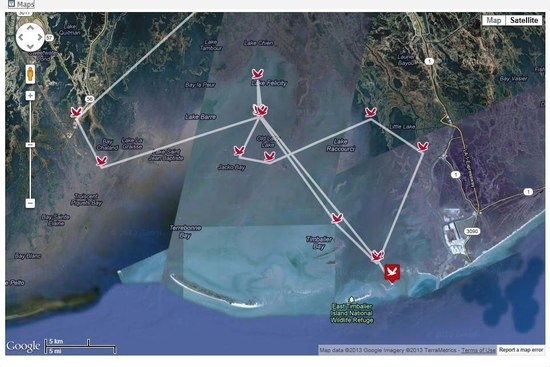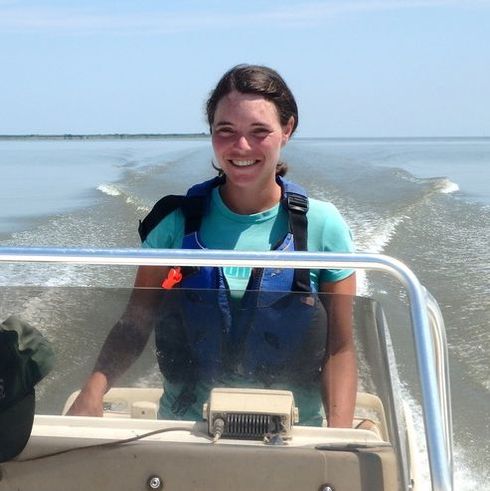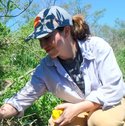I haven't talked much about our technology, but gadgets are at the heart of this project: specifically, 65-gram transmitters designed for birds by Northstar Science and Technology. The tags we've deployed so far (photos in the previous post) are a brand-new technology called GSM, or CTT (cellular terminal transmitter), that uses cell phone towers to upload GPS data. When they aren't near towers, they store the GPS points to transmit at a later date. For our field sites in Louisiana, where cell reception at the nesting colonies is poor, this means long periods without transmission (while the bird is out of range) followed by lots of data (when the bird gets close enough to a cell tower to transmit its stored locations). It was a few days from when we caught our first pelicans to when we began to see what they had been doing, conveniently delivered to our computers.
The data arrive as a set of GPS points, but the web portal allows us to easily view the data as a map, and to follow the tracks of the bird as it moves from point to point.
This particular pelican nested on Felicity Island, our second capture site, but we can only see its latest GPS points when it goes south to forage near the Fourchon Helibase. Luckily, it seems to make a trip south every few days to update us. The units are currently programmed to take a GPS point every hour and a half, but we can make scheduling adjustments depending on battery voltage, time of year, or when the pelican visits an area of interest.
This particular pelican nested on Felicity Island, our second capture site, but we can only see its latest GPS points when it goes south to forage near the Fourchon Helibase. Luckily, it seems to make a trip south every few days to update us. The units are currently programmed to take a GPS point every hour and a half, but we can make scheduling adjustments depending on battery voltage, time of year, or when the pelican visits an area of interest.
Technology isn't without its headaches, but before remote-downloading tags the best way to gather these data would have been to use radio tags and track them down by airplane, resulting in a small handful of very expensive and time-consuming locations. The idea of a transmitter that sends regular locations straight to a computer, and that doesn't require re-capturing or even re-sighting the bird who carries it, is pretty incredible. Over the next few years, it'll be even more incredible to watch where all of them go.




 RSS Feed
RSS Feed
